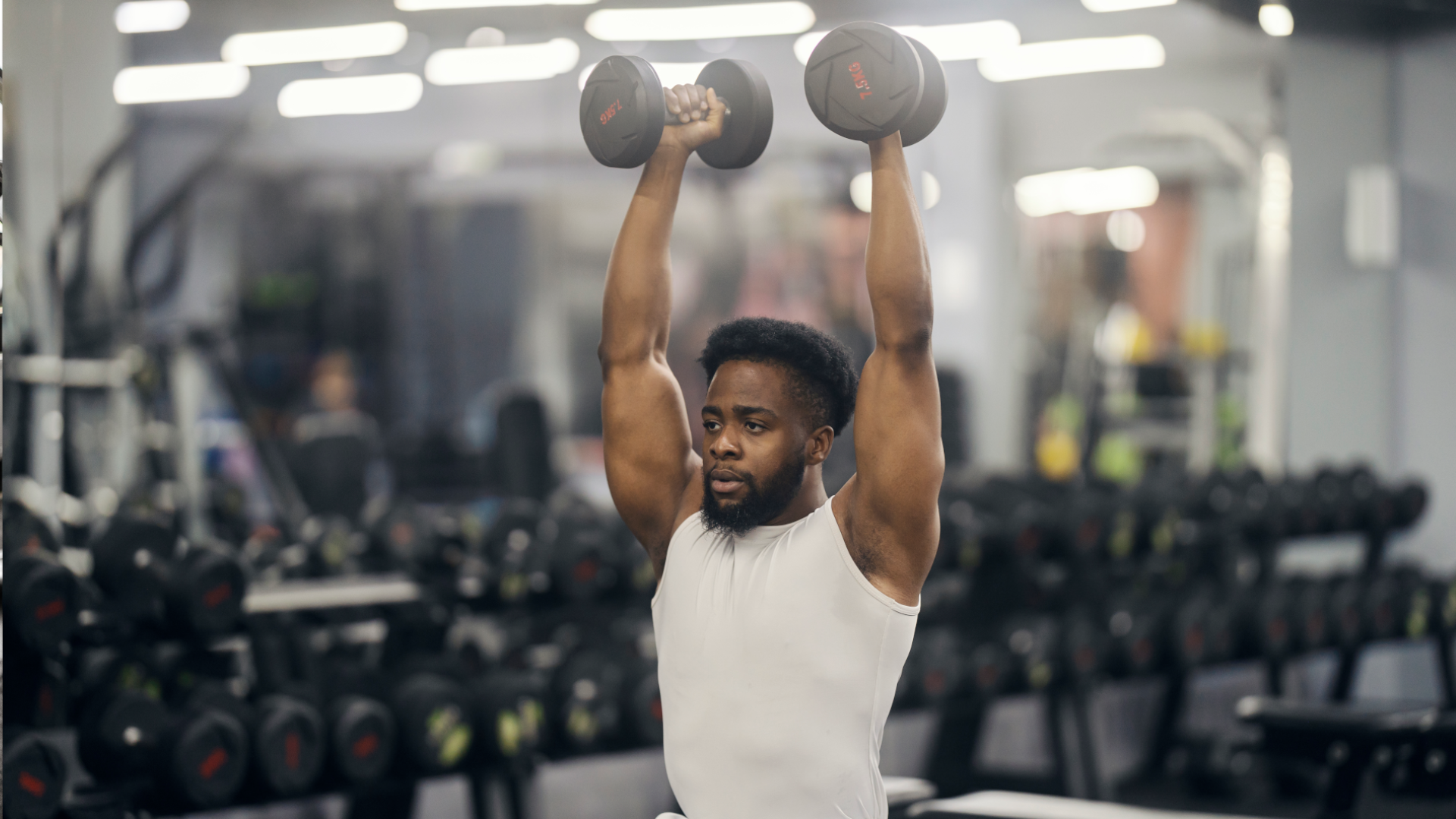I tried the 30-10-30 technique – and it might be my new favourite way to lift weights
Slow down to speed up


When it comes to lifting weights, most of us focus on how heavy we can lift or how many reps we can complete in a session. However, according to Michael Baah, a Personal Trainer to professional athletes and celebrities, the real secret to muscle growth lies in slowing down. Specifically, during the lowering phase of each rep.
The 30-10-30 method flips traditional lifting on its head by targeting the eccentric phase – the controlled descent – to maximise strength, hypertrophy, and time under tension. Naturally, I had to try it. Let’s just say my muscles are still complaining... but they’re also looking pretty pumped.
What is the 30-10-30 Method?

Instead of powering through your reps, when doing the 30-10-30 method, you deliberately slow down the lowering phase to make your muscles work harder
for longer.
The structure is simple; you take 30 seconds to lower the weight slowly, followed by 10 controlled reps (1 second up, 2 seconds down), then 30 seconds of lowering again to finish. That’s one set, and yes, it lasts about 90 seconds, with more than a minute focused purely on the eccentric phase, what Baah calls “negative reps”.
To try it yourself, pick one exercise like a push-up, leg press, or bicep curl works well. Lower the weight very slowly for 30 seconds, perform 10
controlled reps (quick lift, two-second descent), then finish with another 30-second slow lower.
Baah recommends starting with 60-70% of your one-rep max – roughly a weight you’d normally lift 12–15 times. “This method creates deep fatigue, so
form matters more than load. Once you can complete the full 30 seconds with control, bump the weight slightly or add a second round,” he says.
If you’re new to strength training, start with machines or bodyweight moves like squats, push-ups, or seated rows to help maintain good form. You can also use resistance bands or light dumbbells at home.
Get all the latest news, reviews, deals and buying guides on gorgeous tech, home and active products from the T3 experts
Why the 30-10-30 Method works

The magic of 30-10-30 lies in the eccentric phase. Muscles can handle more load while lengthening than they can while lifting, creating greater mechanical tension – one of the biggest triggers for muscle growth. “Think of it like driving a car downhill,” says Baah. “You’re using your brakes -
your muscles – to control the movement. That extended tension creates micro-tears that rebuild stronger, while challenging your stabilisers and nervous system to adapt.”
Research from The Journal of Physiology and The European Journal of Applied Physiology backs this up, showing that eccentric-focused training can
produce greater strength gains than conventional lifting. It also boosts metabolic stress and muscle protein synthesis, both key drivers of hypertrophy. And because you can’t rely on momentum, it sharpens your form, endurance,
and mind-muscle connection - ideal if you want to train smarter, not just harder.
The 30-10-30 workout plan
Baah’s full-body session features six compound and isolation moves, performed once or twice a week. Each exercise uses a single 30-10-30 set, with around 60 seconds’ rest between moves.
Warm up first with a few lighter sets of 6–8 reps to prime your muscles without fatigue.
Then perform:
- Leg Press: 1 x (30-10-30)
- Chest Press (machine or dumbbell): 1 x (30-10-30)
- Seated Row: 1 x (30-10-30)
- Shoulder Press: 1 x (30-10-30)
- Biceps Curl: 1 x (30-10-30)
- Triceps Pushdown: 1 x (30-10-30)

Do this two to three times per week, leaving at least one rest day between sessions.
If 30 seconds feels endless, you’re doing it right. Use your phone timer, count slowly, or film your set – most people move twice as fast as they think. A
training partner can also keep you accountable.
When it starts to feel easier, increase your resistance by 3–5% each week – a simple, measurable way to track progress.
My verdict of the 30-10-30 Method
I’m no stranger to sore muscles, but 30-10-30 hit differently. The slow tempo forces you to stay present through every rep, and the burn sets in earlier than you expect - yet the payoff is huge. You’ll feel stronger, more in control, and noticeably more fatigued in less time.
By slowing things down, you sharpen your technique and strengthen your mind-muscle connection. It’s a fun, humbling switch-up that challenges your focus as much as your body.
It’s not a method I’ve used before, but as a plateau-breaker or growth-boosting phase, I found it incredibly effective. “It builds lean muscle, improves control, and protects joints. It’s ideal for anyone short on time who still wants serious progress,” says Baah.
As he puts it: “You don’t need more time in the gym - just more tension on your muscles. Slow reps, fast results.”

Lucy Miller is a journalist, Level 3 Personal Trainer, Nutritional Advisor and Children’s Fitness Specialist. She holds fitness qualifications from NASM Training and Premier Training International and has been a fitness journalist and fitness (and cover) model for over 20 years. Since going freelance in 2014, Lucy left Men’s Fitness Magazine to write for an abundance of top consumer titles such as Women’s Health, Women’s Fitness, Waitrose, The Times, The Guardian and Runners World.
She’s also extremely passionate when it comes to educating others about health and physical activity and loves inspiring and working with children and adults to help make fitness fun, sustainable and accessible. In her spare time, Lucy is ever the sportswoman. Once a national gymnast, having won three national titles, she has also run a handful of marathons around the world and loves to test her physical and mental side with daily running and gym sessions, not to mention ballet, bootcamp, boxing and TRX.
You must confirm your public display name before commenting
Please logout and then login again, you will then be prompted to enter your display name.